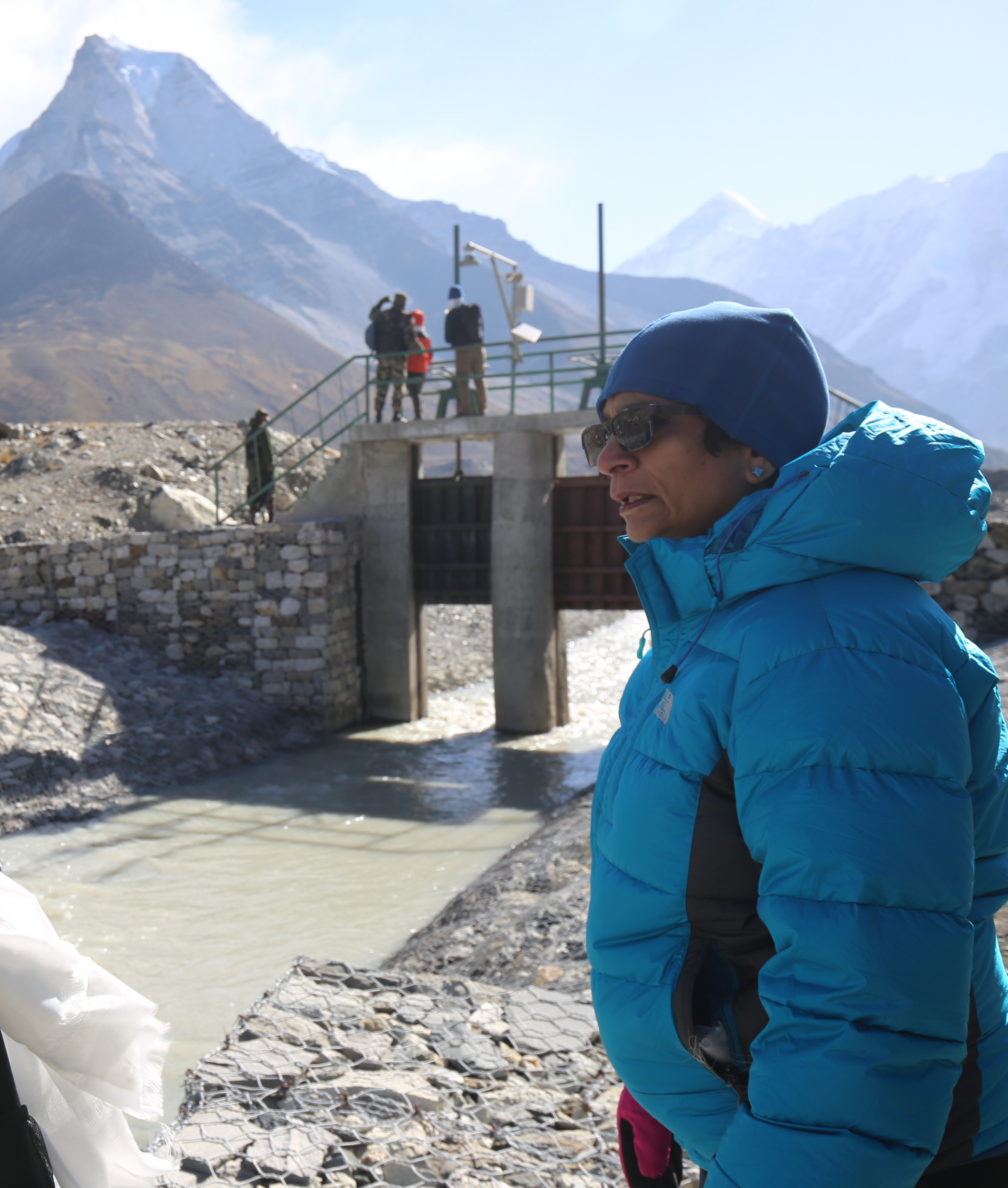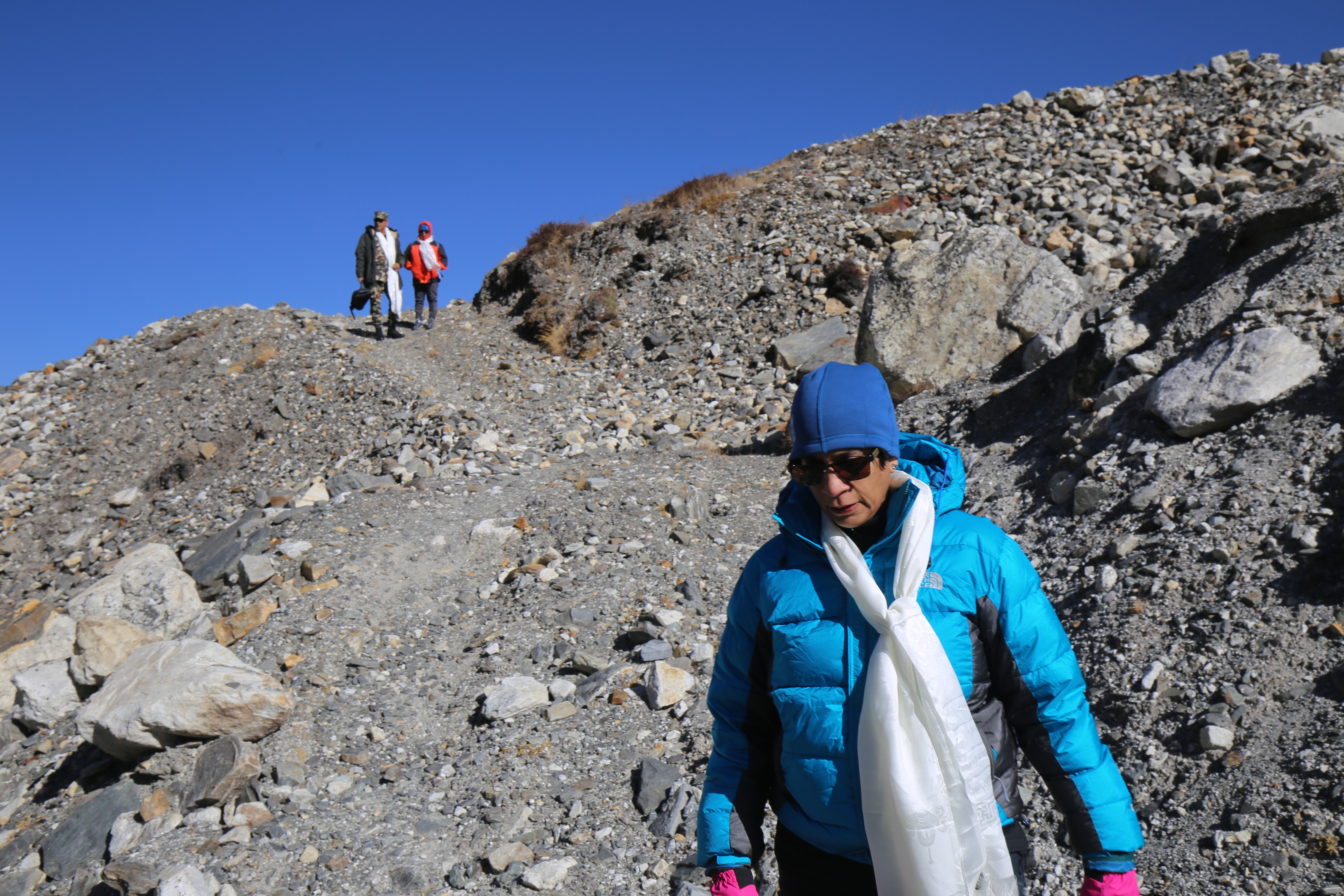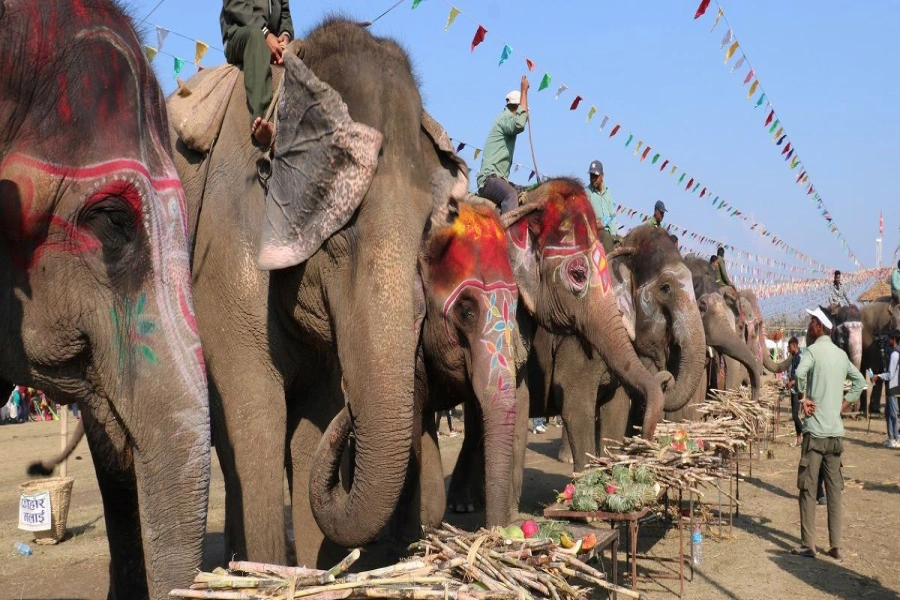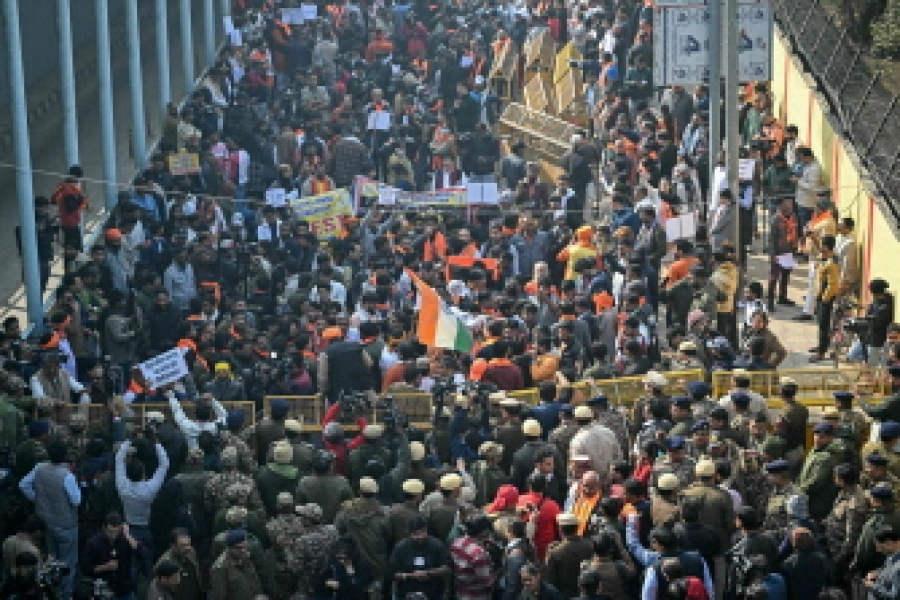UN Assistant Secretary-General and Director of the Regional Bureau for Asia and the Pacific of UNDP, Kanni Wignaraja, visited Nepal last week. During her visit, she held meetings with key politicians, including Prime Minister Pushpa Kamal Dahal, Deputy Prime Minister and Foreign Minister Narayan Kaji Shrestha and Finance Minister Barsha Man Pun and interacted with policymakers and local communities, where she shared her concerns about the impact of climate change that Nepal is facing. Assistant Secretary-General Wignaraja also traveled to the Khumbu region in Solukhumbu to inspect glacial lakes at high risk of outburst, including Imja Lake, where the UNDP, together with the Government of Nepal and Global Environment Facility has worked to mitigate the risk. Republica’s Editor Kosh Raj Koirala caught up with her during her visit to learn more about her observations and UNDP's possible support to Nepal, focusing on the mitigation of the impacts of climate change. Excerpts:
You recently visited Imja Lake, which is at high risk of Glacial Lake Outburst Flooding (GLOF). What are your observations, given that the UNDP, in association with other partners, has worked to mitigate the risk?
I had seen a part of it in a video. But until you see it for yourself, you don't really realize the magnitude of the project and the fact that human skills, ingenuity, and engineering can actually accomplish this at such a height - above 5000 meters, where one can work with nature to truly make people feel safer because it protects them from potential Glacial Lake Outburst Flooding (GLOF). So, it is interesting. It's always curious to me that there are 18 more of these high-risk lakes around Nepal, and then there are many more around the borders of Nepal. So, this has to be a cross-border regional effort. Even from what I saw there and based on my interaction with the community representatives, now they can sleep at night. You know, it is an interesting way to measure human development – this sense of less anxiety. So, I don't know whether it has a direct impact immediately on increasing income or creating new jobs, but it certainly protects homes and families, allowing them to go about their own business. Also, I think that this is linked with conserving biodiversity and promoting ecotourism. If we can bring these three things together, then I think it's a powerful combination for Nepal's future.

What is the UNDP planning to mitigate the risk of GLOF in other parts of Nepal?
SHIFT for Our Planet: Youths urge authorities to make climate j...

I think about a few things. One, we have learned from here. It is also one of the largest climate change adaptation projects at the highest altitude we have done anywhere in the world. It is to see how we can take this experience. And now people have learned skills. We have learned as UNDP and Global Environment Facility (GEF) and will try to replicate it with other lakes as well. So we are hoping that the Green Climate Fund (GCF) and other partners will come in. The second is adapting livelihoods. You can not only deal with the lake. You also have to deal with the fact that people's lives are changing, and that they have to move because of climate change. We heard a lot in the community that the big concern now is the scarcity of water, and people move because of that. So is there a way to look at how to implement basic social protection so everyone has a minimum income? I think that is a key thing. The third area that we will focus more on is ecological biodiversity protection because nature, people, and the overall climate are interconnected here. You can't take one away. I think we will see more of our work in drawing the climate, nature and the water energy portfolio in the public.
The COP28 Global Stocktake (GST) has included the mountain agenda in its text. How will the UNDP advocate and support these mountain issues?
I think the mountain agenda has not received enough coverage and priority. So I'm very glad and I was very pleased when the UN Secretary-General António Guterres was able to come to the camp and take that message to COP-28. But it is not enough. We have to continue global advocacy. So, I hope in COP- 29 and COP-30, the mountain agenda becomes more important and central. Now, I hope that Nepal, together with the neighboring countries, puts this on the global agenda. Another thing is we have to work. This is where the UN, the UNDP, will do their utmost to work in a sub-regional collaboration. There's no point in Nepal doing one thing, Bhutan doing something else. Then you have India doing a third thing and Pakistan something else. So, you have to do it all together. It's very important because otherwise, particularly with the big countries, they have to really come in and support this work on mitigation at their borders, and that'll help countries like Nepal as well.
And, the third thing is all our work that works with communities will integrate these issues better into the governance work we do, the gender equality work we do. We do a lot of health work in the country. So it's not a sector. It is life. So, we will bring all these aspects in. And at the end of the day, if you put the mountain people and those who live below in the valleys, if you put them at the center, then the Mountain Agenda and the Ocean agenda get connected. So, I think that's for us. We also have to reflect and rethink how to do that better.
A new funding mechanism, the Loss and Damage Fund, was established by the COP-28. What role can the UNDP play in making this fund more accessible to the most vulnerable countries like Nepal?
It's a very new fund-- the Loss and Damage Fund. And it is a relatively small fund. There's only $660 million or something like that in it. I wouldn't put all my eggs in that basket. I'm glad it's there. And I think it's more than anything else, brought attention to the fact that this is a global public good that can become a global public bad if you don't invest as a global humanity and as an international player. So I'm very glad it's there, but I don't think we can be complacent and sit back and say, "Oh, now things will be okay because there's a loss and damage fund." It is only one small part of what has to happen. I think there has to be a lot more climate financing overall so that the world's attention and investment come to countries like Nepal so that they can benefit from the bigger financing arrangements for development financing and climate financing from both the public sector and the private sector. For us, as the UNDP, that is the focus.
I think we can help to make this fund more accessible to countries like Nepal through our corporate and global platform. I think the UN as a whole, but UNDP also in particular because of the work we do on climate has to make sure that it's the smaller voices, the countries that don't have the big investments, that don't have the deep capabilities and the institutions yet. It is building those institutions, building the policies and the regulations to help more money flow into Nepal. So for me, the important thing - and if you think about it - is money moves where the market is. A market looks to see if this is a risk-free or a low-risk investment. So, the idea of working with the government, the private sector and communities is to lower the risk for investors and make it a high-value proposition.
What are the priority areas for this region on climate action? How is the UNDP planning to help this region in this regard?
I think it's bringing the story, the narrative of this region and particularly the Hindu Kush Himalaya narrative, much more to the global agenda. I think we can be stronger in our advocacy. Why are we waiting for all the glaciers to melt? We have to be more powerful. The second is that we really have to manage to get to do cross-border trans-boundary work, and that is something we will also focus on. And third, I think putting climate at the heart of the national agenda is important. So, it's very good that Nepal has a Nationally Determined Contribution (NDC). It has the National Adaptation Plan. Now, it's turning the plan into action and getting money behind it. I think that is the critical part and the way we can support it.
In the context of climate action, do you have any message for policymakers and politicians?
I would say that for the future of this country, of future generations, both from nature and biodiversity and from a people's future point of view for the next generation, the leaders of this country have to do two things: One, stick with climate financing and climate policy as part of development. And two, don't change the policy. It doesn't matter who comes and goes. This is not about political parties or institutions. It's about staying the course because this country cannot afford to lose a step in the fight against climate change.








































